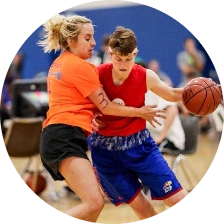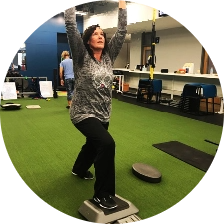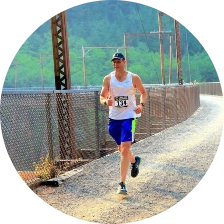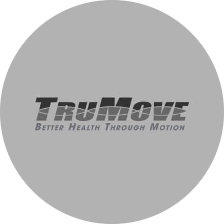Blog
November 13, 2018
Taking a Swing at Tennis Elbow

TruMove (Overland Park) – Elbow pain relief and treatment specialist for cases of elbow arthritis, tennis elbow, elbow rehabilitation, tendonitis & elbow injury.
Read up for:
- Diagnosing your elbow pain
- Causes of Tennis Elbow
- Symptoms of Tennis Elbow
- Tennis Elbow Treatment & Prevention
Whether you frequent the tennis courts sprinkled throughout Kansas City or not, if you are experiencing pain with noticeably reduced mobility and/or strength in your elbow and forearm, you may be suffering from lateral epicondylitis, more commonly known as “tennis elbow.” In fact, the majority of people who experience tennis elbow don’t even play tennis! It is a condition that reaches beyond athletes to all people, most commonly affecting adults ages 30-50 years old, particularly those with jobs that require repetitive motion of the wrist and arm.
Diagnosing Your Elbow Pain
Tennis elbow pain is primarily felt where the tendons of your forearm muscle attach to the bump on the outside of your elbow. If repetitive activities using your elbow, wrist and hand are part of your daily routine, the muscles of your forearm are likely to become overworked and strained, putting added stress on the tendons of your elbow, perhaps even causing tiny tears. We’re talking tendon tears, not tears from your eyes…although those may result as well. If you are experiencing such pain in the elbow and forearm, please don’t ignore the problem. While time, ice, and anti-inflammatories may be part of your recovery process, additional serious damage can be done if activity is not also modified appropriately and immediately. If left untreated, symptoms can become chronic and last for months or even years.
So where do you turn? While there are severe cases when surgery is needed, typically tennis elbow can be treated with physical therapy. Rather than beginning treatment with a search for reputable elbow specialists and/or surgeons across the Kansas City metro area, schedule an appointment with one of our top-notch TruMove physical therapists right here in Overland Park KS. We will get to the source of your elbow pain and plan your treatment accordingly, ideally preventing any trips to the operating room.
Causes of Tennis Elbow
While athletes may suffer from tennis elbow, particularly if an improper backhand technique is used in racket sports, tennis elbow pain can also result from occupations that require repetitive motion of the wrist and arm. The extensor muscles you use to grip, twist, and carry things all attach to the lateral epicondyle at the elbow. Therefore, window cleaners, plumbers, painters, carpenters, chefs, butchers, cashiers, assembly line workers, and package delivery personnel are all at risk of developing tennis elbow. Even prolonged work on a computer can cause tennis elbow.
Symptoms of Tennis Elbow
Acute tennis elbow symptoms may occur suddenly after performing an activity that requires force—lifting, twisting, pulling, or hitting backhand tennis strokes. More commonly, however, symptoms appear more gradually over the course of weeks or even months through repetitive motion. The elbow pain often radiates into the forearm and wrist. In addition to the pain, muscle weakness may also occur making even the simplest of tasks extremely difficult—turning a door knob, holding a cup of coffee, or using a fork and knife. Furthermore, since tennis elbow results from repetitive movements, other muscles and joints in the elbow region may be affected as well, including your wrist, shoulder and even upper back.
Tennis Elbow Treatment & Prevention
In addition to manual therapy for the injured area, your TruMove physical therapist will help you in your recovery by focusing on your movement limitations, correcting muscle weaknesses and/or imbalances. At times, people become complacent in their daily activities and begin to develop habits that may exacerbate the issue and their tennis elbow pain. Often simple activity modifications can do wonders for the healing process and prevent future injury. Such modifications may include the manner in which you lift a grocery bag, activating your trunk and shoulder muscles to take tension off of your arm muscles, altering your computer work station, changing your grip on your racket, and taking breaks from repetitive tasks.
Dry needling is also a treatment option at TruMove that has proven to be extremely effective in reducing tennis elbow pain. From athletes to window cleaners, from acute trauma to chronic pain, dry needling has brought relief for many TruMove tennis elbow patients…and even an employee. Amy Mahnken was experiencing severe tennis elbow symptoms after a recreational game of tennis with a friend. “I felt the sharp pain in my elbow and forearm immediately on a backhand stroke, but I continued to play. The pain worsened and by that evening and for several days after, I could barely move my right arm. Opening the door, pulling out a kitchen utensil drawer, and even lifting a pillow (yes, a pillow) off of the floor could not be accomplished with that arm. Even typing on the computer was difficult. It was painful and frustrating.” Amy decided it was time to ask one of our TruMove PTs to dry needle the area. “After one session of dry needling, I noticed an immediate reduction in pain and increase in mobility. I had one follow-up session and have not had any tennis elbow pain or weakness since. Don’t worry, I modified my backhand grip, too,” she says with a smile.
If you have any questions about your tennis elbow symptoms, available treatments, or how to prevent future injury, please reach out to us or visit our clinic in Overland Park KS. We have been serving the Kansas City area for over a decade and continue to expand our outreach, always striving for Better Health Through Motion!



 Overland Park
Overland Park









